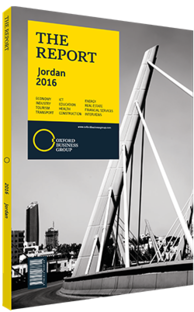Feras Kilani, Partner, Operational Transaction Services, MENA, EY, on strategic divestments: Viewpoint

Divestments are significant capital events whereby a company disposes of an asset or a business unit that it owns. While divestments have historically been associated with troubled assets or underperforming businesses, more companies are starting to consider divestment as a way to support growth. Divestments done correctly and for the right reasons can improve performance and increase profitability, in addition to increasing revenue in legacy assets as the company diverts focus to businesses that matter.
Based on market data from nearly 800 deals globally in the last decade, EY’s Global Corporate Divestment Study has found that strong companies use strategic divestment to improve earnings and increase shareholder value at a greater pace than the market. A portfolio review is a good place to start thinking about what businesses to focus on and what businesses to cast aside. While most companies believe they run sound portfolio reviews, they are often slow to react to market conditions. 56% of study participants suggested that shortcomings in their portfolio review processes have resulted in failure to achieve intended divestment targets, while 53% stated that they have held on to an asset for too long. Private equity owners, on the other hand, tend to keep their investee businesses under constant review, turning portfolio reviews into a habit rather than an occasional event.
For a divestment to be effective, it must meet three criteria. First, it must have a positive impact on the valuation multiple of the remaining company. The company must have a clear strategy in place for how the proceeds will be used to positively impact the remaining business; in the case of the majority of study participants, divestments were used to fund growth, either in the form of acquisitions or investments in new products or markets.
Second, to be effective a divestment must generate a sale price above expectation. This can be achieved by being proactive in such a way that enables the company to consider all potential buyers and understand their buying strategies. Third, the divestment must close in line with timing expectations in order to protect against value erosions due to delays and inefficiencies in the divestment process.
Once an asset or a business has been identified as a target for divestment, the business needs to be prepared for exit. The seller needs to identify gaps in the business and then address them, by putting together a compelling value story for the buyer supported by robust assumptions and justification, and prepare rigorously for the divestment with solid data, documentation and management preparation.
Sellers must foresee buyers’ ambitions and concerns, preparing for the transaction. By relating a clear understanding of how the entity would operate on a standalone basis, supported by a detailed separation plan, sellers can reassure potential buyers that they will receive the asset on time and in full working condition. Sellers need to equip buyers with the tools to take the business forward in the form of potential synergies and value-creating initiatives.
During execution, sellers should demonstrate their commitment to the business, ensuring the buyer that they would provide them with wide-ranging support throughout the process, accompanied with the right management team. It is the seller’s business until it is off the books. Finally, helping the buyer obtain all the data they need in an orderly, transparent and timely manner could make the difference between a successful divestment and a failed one.
In today’s ever-changing market, business divestments can be very powerful tools in the hands of capable companies. Evidence from EY’s study shows that companies that divest strategically are more likely to execute divestments that positively affect their remaining business over the long term. Their success depends on whether they are executed with forethought, at the right time, and for the right reasons.
You have reached the limit of premium articles you can view for free.
Choose from the options below to purchase print or digital editions of our Reports. You can also purchase a website subscription giving you unlimited access to all of our Reports online for 12 months.
If you have already purchased this Report or have a website subscription, please login to continue.

